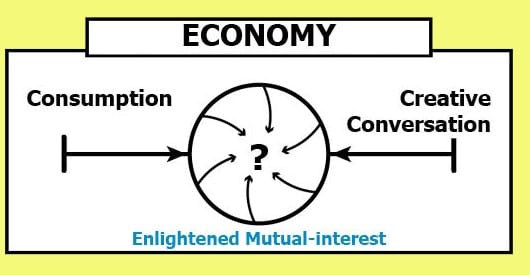In 2000, Paul Ray and Sherry Anderson introduced us to three distinct cultures co-existing in the U.S. and Western Europe whose distinctions were based on values. The “Moderns” who value money and success tipped in at 50% of the population. The “Traditionalists” at 24% value community and the Bible, and the “Cultural Creatives” at 26% (50 million in U.S.) and 35% in W. Europe value nature, authenticity, spirituality, peace, relationships, feminism, social justice and social responsibility. The authors assert the Cultural Creatives’ group will likely grow annually by 1% given the natural attrition of the Traditionalists and the evolving consciousness of the Moderns. In 2011 that claim would leave the Cultural Creatives at 40%–70% of the population, which some suspect could be a very conservative estimate.
In reviewing Ray and Anderson’s book, Publishers Weekly reiterates “cultural creatives hold the potential for radically reshaping the values and material realities, the ‘deep structure,’ of American life.” As another reviewer put it, “I’m really enjoying what I’m learning about this large and largely unknown segment of the U.S. population. As one of them, it’s encouraging to realize how many of us there are. It may be that the election of Barack Obama is one of the first signs of how much potential impact Cultural Creatives can have when acting in concert.” Patricia Aburdene (2005) further supports these views in her claim, “when changing values meet economic necessity, transformation takes off.”
So here we sit in 2011 amid one of the greatest eras of transformation. Its roots are embedded in the consciousness raising of the 1960s and its numbers have conceivably swelled to tens of millions as of the new millennium with no sign of slowing down. In fact, the accelerated pace of change which is our everyday experience indicates we are still in an accelerated growth phase.
What does all this mean for our economy? In essence, spiritual and social development, core values of a potentially dominant segment of the world population, will influence the current economic values of status and over-consumption. Given how the greed of corporate elites and Ponzi schemes so negatively impacted all aspects of our global economy, many would agree it is a system in need of radical redesign.
The economy has already evolved through several phases starting with the Agrarian Economy where humans grew their own food and bartered or sold it for other necessities. With the advent of the Industrial Revolution at the end of the 18th century and the development of metallurgy, machinery and standardization, we entered the era of manufacturing. The Manufacturing Economy carried us through the 19th century. During the 20th century scientific progress and the subsequent pooling of information resources led to faster, higher quality outcomes that birthed the Information Economy.
However, by the 21st century, information and knowledge went from being a source of power to a commodity—that is—free and accessible to anyone with access to the Internet. Although information is still the entry to competition in the marketplace, it is no longer the competitive edge.
What wins today is the accelerated rate of innovation and problem solving enabled by the ease and quality of human interactions. Since one of us is not as creative as all of us, success or value creation in today’s Interaction Economy will be determined by our ability to master the creation and leadership of networks of interaction.
Collaboration rather than compliance is an ingredient in the recipe for ensuring valuable interactions. In order to collaborate effectively and creatively, we engage in conversations with stakeholders—colleagues, suppliers, customers and managers. These complex interactions or conversations deal with ambiguity requiring high levels of judgment or decision-making. If the conversations lead to “anything that customers and shareholders are willing to pay for and that employees are willing and able to produce,” then they contribute value. If not, they constitute waste.
Let me try to wrap up by reiterating “when changing values meet economic necessity, transformation takes off.” If spiritual and social development values rub up against an interaction economy necessitating valuable conversations, what does the economic paradox of the present look like? I might suggest it to include consumption at one end of the continuum and creative conversation at the other. What would you offer?
In considering the convergence of this paradox, I feel the verdict is unclear. Aburdene and John Mackey, CEO of Whole Foods, speculate it to be conscious capitalism or enlightened self-interest. Ron Robins refers to it as the consciousness of enlightened economics. I suggest a blend of both—enlightened mutual-interest?
References:
Aburdene, Patricia. (2005). Megatrends 2010: The Rise of Conscious Capitalism, Hampton Roads.
Ray, Paul, Ph.D., and Anderson, Sherry, Ph.D. (2000). The Cultural Creatives: How 50 Million People Are Changing the World, Harmony.





